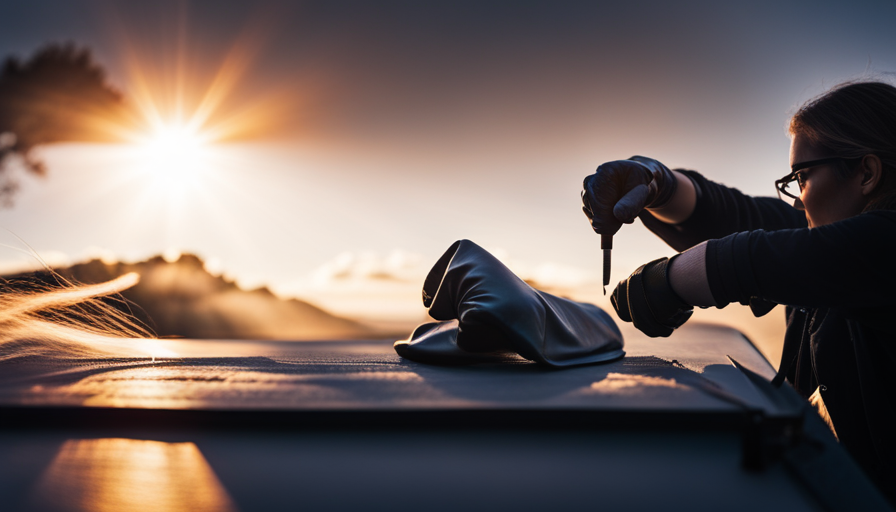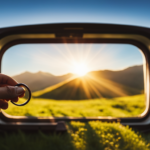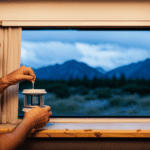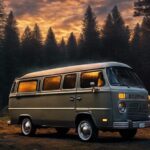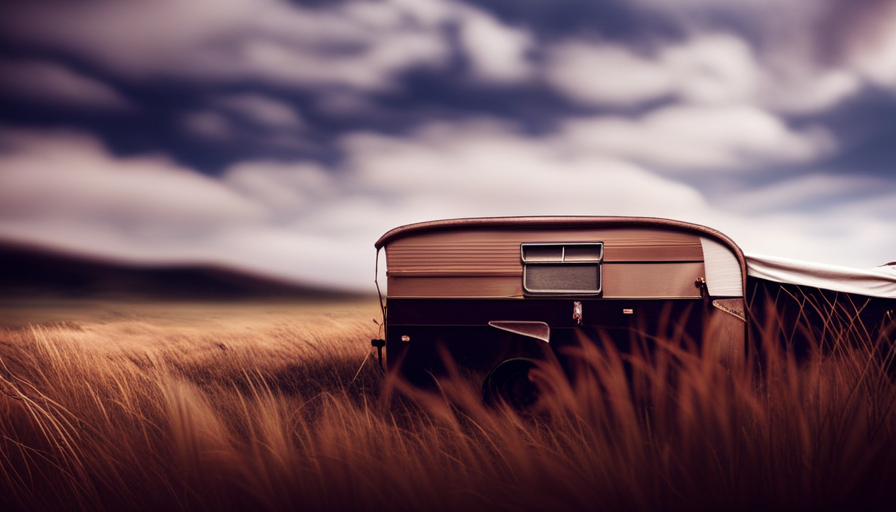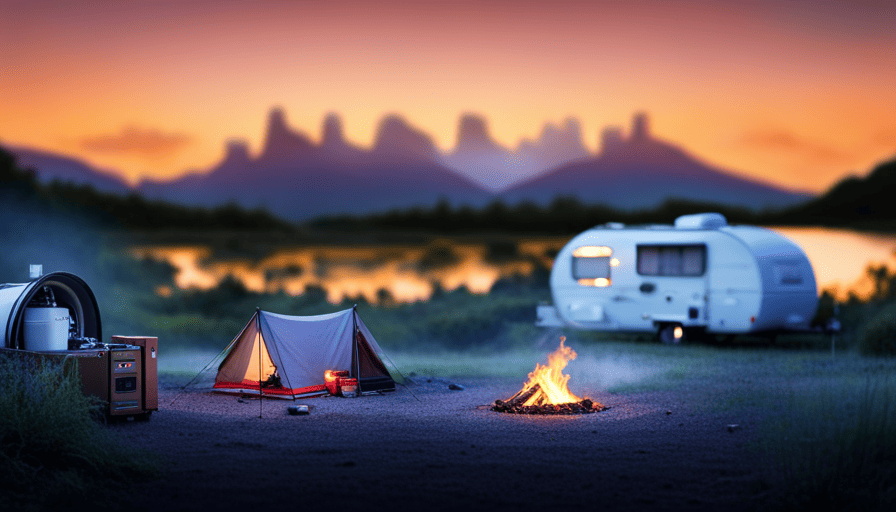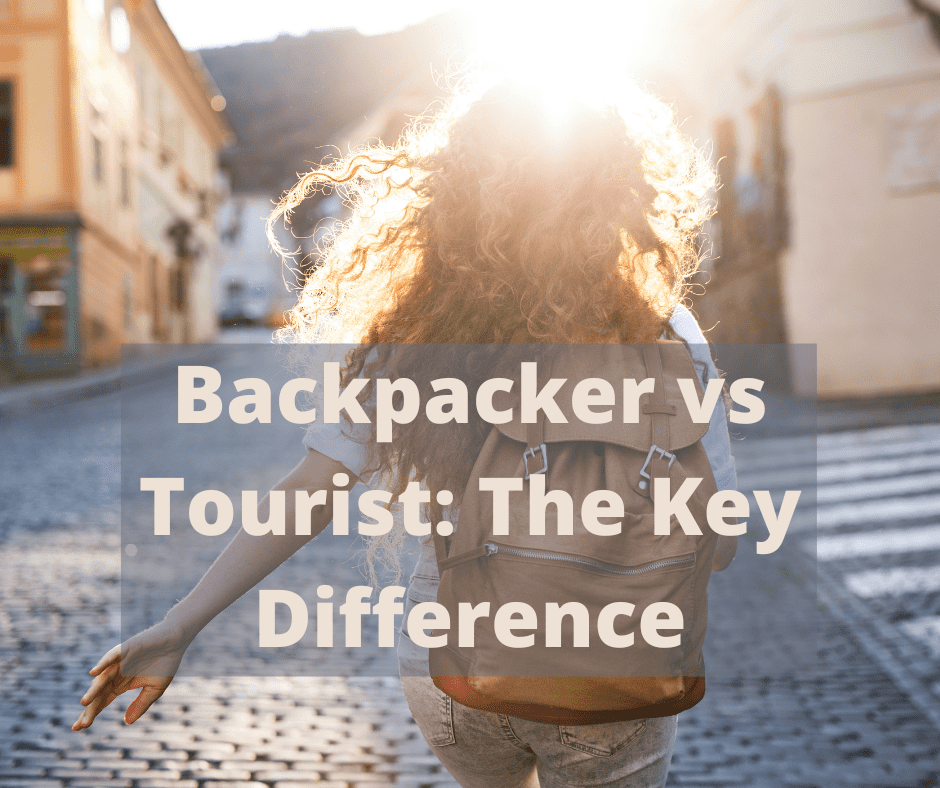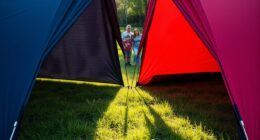Are you fed up with the intense glare of the sun and the intrusive gaze of nosy people while you’re in your camper? We’ve got just the right fix for you – tinted windows for your camper! This detailed guide will walk you through the entire process of tinting your camper windows, helping you achieve the utmost comfort and privacy.
First and foremost, we will gather all the necessary materials to ensure a smooth and efficient tinting process.
Then, we will clean the windows thoroughly to remove any dirt or grime that may hinder the adherence of the window film.
Next, we will carefully measure and cut the window film to fit each window perfectly.
Once the window surface is prepared, we will apply the window film using precise techniques to ensure a bubble-free and seamless finish.
Any excess film will be neatly trimmed, and then we will allow the film to cure, ensuring its longevity.
Finally, we will discuss how to clean and maintain the tinted windows, as well as the numerous benefits you can enjoy from having tinted camper windows.
So, let’s dive right in and transform your camper into a cool, private oasis!
Key Takeaways
- Tinted camper windows provide comfort, privacy, and various benefits.
- Gather necessary materials for the tinting process.
- Clean windows thoroughly to remove dirt and grime.
- Measure and cut window film to fit perfectly.
Gather the Necessary Materials
Now that you know what you’ll need, let’s get started by gathering all the necessary materials for tinting your camper windows! Choosing the right window film is crucial for achieving a professional tint job. Look for a film that’s specifically designed for automotive use and provides the level of tint you desire. Consider factors such as privacy, UV protection, and heat reduction when making your selection.
Additionally, make sure the film is legal in your area, as some states have restrictions on the darkness of window tint.
To ensure a professional tint job, here are a few tips to keep in mind. Firstly, clean the windows thoroughly before applying the film. Any dirt, dust, or debris on the windows can affect the adhesion and overall appearance of the tint. Use a mild window cleaner and a lint-free cloth to remove any grime or smudges.
Secondly, gather all the necessary tools, including a squeegee, a heat gun, a utility knife, and a spray bottle filled with a mixture of water and soap.
With the right materials in hand, it’s time to move on to the next step of the process – cleaning the windows thoroughly.
Clean the Windows Thoroughly
First, make sure you’ve scrubbed away every speck of dirt and grime from the surface of your windows. Polishing the windows is an essential step in achieving a flawless tint. Start by using a mild window cleaner or soapy water to remove any dirt or debris. Use a microfiber cloth to gently scrub the windows, paying extra attention to the corners and edges. For removing stubborn stains, you can use a mixture of vinegar and water or a specialized glass cleaner. Make sure to rinse the windows thoroughly to avoid leaving any residue behind.
To engage the audience, here are five important things to keep in mind when cleaning your camper windows:
- Use a lint-free cloth to avoid leaving streaks or lint on the windows.
- Avoid using harsh chemicals that can damage the window surface or tint film.
- Clean both the inside and outside of the windows for a consistent look.
- Take your time and be thorough to ensure a professional-looking finish.
- Dry the windows completely to prevent water spots or streaks.
With your windows sparkling clean, you’re ready to move on to the next step: measuring and cutting the window film. This process requires precision to ensure a perfect fit for each window.
Measure and Cut the Window Film
To achieve a flawless fit for your window film, start by carefully measuring and cutting the film with precision. Accurate measurements are crucial to ensure the film covers the entire window surface without any gaps or overlaps. When measuring, use a measuring tape or ruler to determine the dimensions of the window. Take into account any curves or angles, as they may require additional adjustments.
For accurate results, it’s essential to employ proper measuring techniques. Begin by measuring the height and width of the window, ensuring you measure both the glass and the frame. Additionally, measure any sections that need to be covered separately, such as divided windows or sunroofs. Take multiple measurements to double-check accuracy and make adjustments as needed.
When it comes to cutting the film, having the right tools is essential. A sharp utility knife or window film cutting tool will enable clean, precise cuts. Make sure the blade is sharp to prevent tearing or jagged edges. Use a straight edge to guide the cutting tool and make straight cuts.
Once the film is accurately measured and cut, you can proceed to the next step of preparing the window surface. This involves cleaning the window thoroughly to ensure optimal adhesion of the film.
Prepare the Window Surface
Start by giving your window a thorough cleaning, removing any dirt or grime that may hinder the film from adhering properly. Wipe away a layer of dust to reveal a sparkling surface.
It’s important to have a clean and smooth window surface before applying the tint. If there’s any old tint on the window, it needs to be removed first. You can use a razor blade or a heat gun to carefully peel off the old tint. Make sure to remove any adhesive residue left behind as well.
Once the old tint is removed, you may need to apply a primer to the window surface. The primer helps the window film adhere better and prevents it from peeling off over time. Apply the primer evenly using a lint-free cloth, making sure to cover the entire window surface. This step is crucial for ensuring a long-lasting tint.
Now that the window surface is clean and prepped, we can move on to the next step of applying the window film, which will be discussed in the subsequent section.
Apply the Window Film
Once you’ve prepared the window surface, the next step is to carefully apply the film, ensuring a smooth and flawless finish. To ensure success, it’s important to know how to avoid common mistakes while applying window film.
Firstly, make sure to thoroughly clean the window surface and remove any dirt or debris that could affect adhesion. Additionally, be mindful of the temperature and humidity conditions, as extreme weather can impact the film’s performance.
When it comes to choosing the right type of window film, there are various options available, each with its own benefits. One popular type is solar control film, which helps reduce heat and glare from the sun while still allowing natural light to enter the camper. Another option is privacy film, which provides added security and prevents outsiders from peering into the camper. Decorative film is also available, allowing you to add a personal touch to your camper’s windows.
Applying window film requires careful attention to detail and knowledge about the different types available. By avoiding common mistakes and choosing the right film for your needs, you can achieve a professional-looking finish.
Now, let’s move on to the next section about how to smooth out the film and remove air bubbles.
Smooth Out the Film and Remove Air Bubbles
Now, let’s dive into the process of achieving a flawless finish by smoothing out the film and banishing those pesky air bubbles. This step is crucial to ensure that your window tint looks professional and lasts for a long time.
To start, make sure you have all the necessary tools handy, including a squeegee, heat gun, and a lint-free cloth. Begin by spraying a solution of water and a few drops of dish soap onto the window. This will act as a lubricant and allow you to move the film around easily.
Next, take the squeegee and starting from the center, gently push the film towards the edges, removing any excess water or air bubbles as you go. Be sure to apply even pressure and work in a smooth, controlled motion. Avoid using excessive force as it may damage the film or the window itself.
To avoid common mistakes, always work in small sections and take your time. Rushing through this step may result in uneven application or trapped air bubbles. If you notice any stubborn air bubbles, use a heat gun to warm up the film and then gently press them out with the squeegee.
By following these tips for first-time tinters, you can achieve a flawless finish on your camper windows.
Now, let’s transition to the next section where we will discuss how to trim the excess film for a clean and professional look.
Trim Excess Film
To achieve a sleek and polished appearance, it’s time to neatly trim away any excess film, giving your windows a professional touch that’ll leave you feeling proud.
Trimming the excess film is an important step in the tinting process as it ensures a clean and finished look. There are various trimming techniques that you can employ to achieve the best results.
Firstly, make sure you have a sharp utility knife or a precision trim tool. This’ll allow you to make precise cuts without damaging the window or the film. Start by trimming the edges of the film, following the contours of the window. Take your time and be patient, as rushing through this step can result in jagged or uneven edges.
One common mistake to avoid is cutting the film too close to the glass. Leave a small gap of about 1/16th of an inch to prevent the film from peeling or lifting over time. Additionally, be careful not to cut too much off, as it can make it difficult to align the film properly.
Once you’ve trimmed away the excess film, you can move on to the next step of the process: allowing the film to cure. This is an important part of the tinting process as it allows the adhesive to fully bond with the glass, ensuring a long-lasting and durable tint.
Allow the Film to Cure
After trimming the excess film, it’s essential to allow the film to cure properly before moving on to the next step.
The curing process is crucial as it ensures that the tint adheres correctly to the windows and provides the desired results. During the curing process, the tinted film undergoes a chemical reaction that helps it bond with the glass surface. This reaction takes time, and it’s essential to follow the manufacturer’s instructions for the recommended curing duration.
Properly curing the film offers several benefits:
- Enhanced durability: Allowing the film to cure fully ensures a stronger bond between the film and the glass, making it more resistant to peeling or bubbling.
- Optimal appearance: Curing helps to eliminate any haze or cloudiness that may be present after installation, resulting in a clean and crystal-clear finish.
- Improved performance: The curing process allows the tint to reach its maximum heat and UV rejection capabilities, providing better comfort and protection inside the camper.
- Longevity: A properly cured tint will last longer, maintaining its performance and appearance for years to come.
Once the film has cured, it’s time to move on to the next section where we’ll discuss how to clean and maintain the tinted windows.
Clean and Maintain the Tinted Windows
Keep your tinted windows looking their best by regularly cleaning and maintaining them. Maintaining window tint is crucial to ensure its longevity and effectiveness.
To start, gather a few basic supplies such as a microfiber cloth, a mild window cleaner, and a soft-bristle brush. Begin by gently wiping down the tinted windows with the microfiber cloth to remove any dust or debris. Avoid using abrasive materials or cleaners that contain ammonia, as they can damage the tint.
If there are stubborn spots or fingerprints, spray a small amount of the mild window cleaner onto the cloth and gently wipe the affected area. For those hard-to-reach spots, use a soft-bristle brush to remove any dirt or grime. Remember to be gentle and avoid applying excessive pressure.
Regularly cleaning tinted windows not only keeps them looking clean and clear but also helps to maintain the tint’s functionality. By following these simple maintenance steps, you can enjoy the benefits of tinted camper windows for years to come.
Enjoy the Benefits of Tinted Camper Windows
Discover the numerous advantages that come with having tinted windows on your camper. When it comes to privacy, tinted camper windows offer a significant benefit. Whether you’re parked at a campground or driving on the road, you can enjoy the privacy and peace of mind knowing that prying eyes won’t be able to see inside your camper. This is especially important when you’re parked in crowded areas or if you have valuable belongings inside.
Another benefit of tinted windows is increased energy efficiency. Tinted windows help block out the sun’s heat, keeping the interior of your camper cooler on hot summer days. This means you won’t have to rely as much on your air conditioning, saving you energy and reducing your overall fuel consumption. Additionally, tinted windows can help prevent the fading of your camper’s interior due to UV rays. This means your upholstery, curtains, and other furnishings will last longer and maintain their vibrant colors.
Tinted camper windows provide several benefits, including increased privacy and improved energy efficiency. By blocking out prying eyes and reducing the amount of heat that enters your camper, tinted windows not only enhance your comfort but also help save energy and protect your belongings. So if you’re looking for a practical and functional upgrade for your camper, tinted windows are definitely worth considering.
Frequently Asked Questions
How long does the window film take to cure?
The curing time of window film can vary depending on the specific product and environmental conditions. On average, it takes about 24 to 48 hours for the window film to fully cure and adhere to the glass surface. During this time, it’s important to avoid touching or cleaning the film to ensure proper bonding. If you ever need to remove the window film, it can be done using a heat gun or soapy water and a razor blade.
Can I tint my camper windows if they have existing tint?
Yes, you can tint your camper windows even if they already have existing tint. However, it’s important to note that adding another layer of tint can affect the overall darkness and visibility. It’s recommended to consult with a professional to ensure the new tint is applied correctly and doesn’t compromise the existing tint. Tinting camper windows offers various benefits such as increased privacy, reduced heat, and protection against harmful UV rays.
To maintain tinted camper windows, avoid using abrasive cleaners and opt for gentle cleaning solutions instead. Regularly inspect the tint for any signs of peeling or damage and address them promptly.
What kind of cleaner should I use to clean the windows thoroughly?
To clean the windows thoroughly, we recommend using the best cleaning products and following effective window cleaning techniques. First, gather a microfiber cloth, glass cleaner, and a squeegee.
Spray the glass cleaner onto the cloth and wipe the windows in a circular motion. Then, use the squeegee to remove any streaks or excess cleaner.
Make sure to clean both the inside and outside of the windows for a spotless result.
Is it possible to remove the window film if I’m not satisfied with the results?
Yes, it’s possible to remove the window film if you’re not satisfied with the results. While tinting camper windows can provide numerous benefits, such as privacy and UV protection, it’s understandable that you may want to explore alternative window treatments.
If you find that the window film doesn’t meet your expectations, it can be removed using specific techniques and products. This allows you to consider other options that better suit your preferences and needs.
Are there any legal restrictions or regulations regarding tinted camper windows?
When it comes to tinting camper windows, it’s important to consider any legal restrictions or regulations that may be in place. The pros of tinted camper windows include increased privacy, reduced glare, and protection from UV rays.
However, there are also cons to consider, such as reduced visibility at night and potential issues with law enforcement. To choose the right tint for your camper windows, consider the tint percentage, color, and quality of the film.
Always check local laws and regulations before tinting your camper windows to ensure compliance.
Can Tinting Camper Windows Help Prevent Water from Freezing Inside the Camper?
Tinting camper windows can play a significant role in keeping camper water unfrozen. The tinting film acts as an insulating layer, reducing heat transfer and helping to maintain a stable temperature inside. By minimizing heat loss through windows, the chances of water freezing inside are reduced, ensuring a more comfortable camping experience during cold weather.
Conclusion
In conclusion, tinting your camper windows is a worthwhile endeavor that can enhance both the functionality and aesthetic appeal of your vehicle.
By following the steps outlined in this article, you can easily achieve professional-looking results. Remember the adage, "measure twice, cut once," to ensure precision throughout the process.
With clean and well-maintained tinted windows, you’ll enjoy benefits such as increased privacy, reduced glare, and improved insulation.
So why wait? Get started on tinting your camper windows today and experience the difference for yourself.

